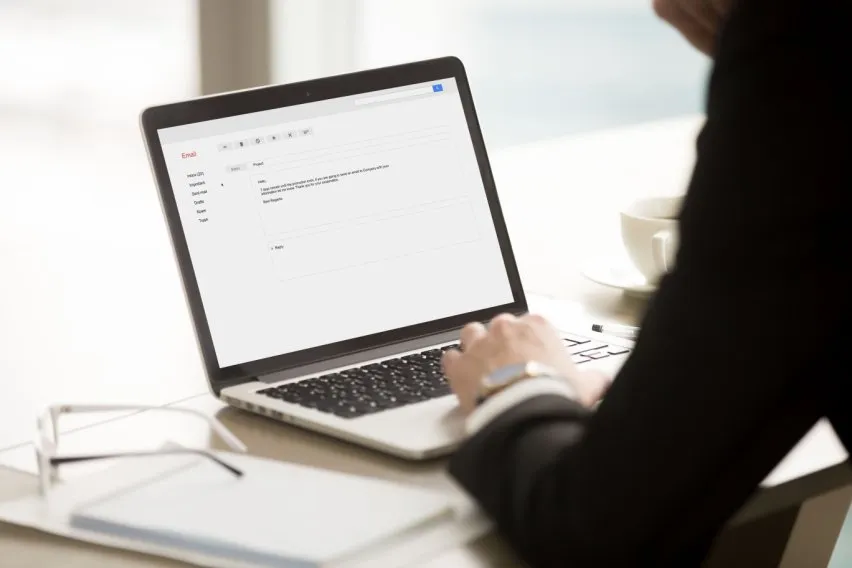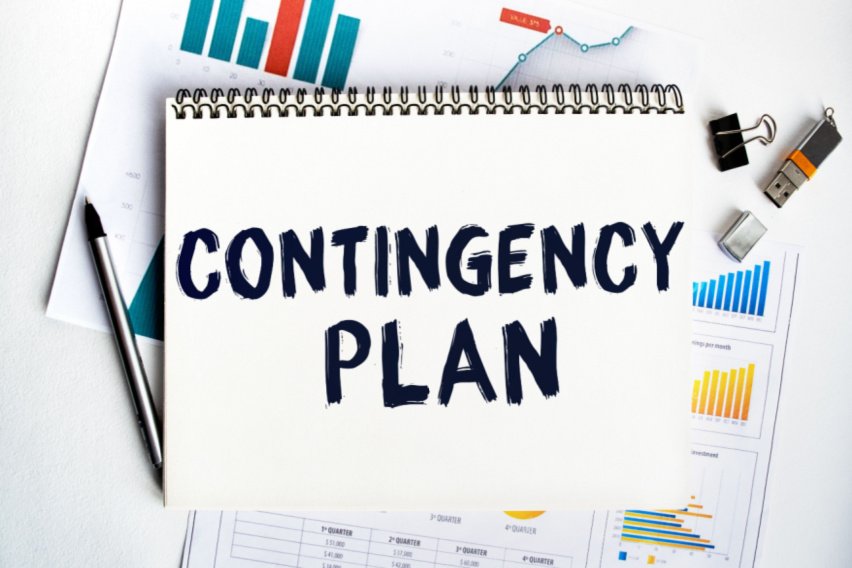How to Write a Project Proposal: A Step-By-Step Guide

A project does not suddenly materialise out of nowhere. Getting it right and obtaining the support that your business needs to grow frequently takes a lot of strategic planning. And on top of that – a huge amount of effort.
It’s crucial to be able to convey your ideas effectively if you want to place an external or internal project on the fast track for approval. And while a strong elevator pitch could be effective in some situations, it’s frequently insufficient.
That’s where a project proposal comes into play.
But what exactly is a project proposal? And how do you write one?
Read on as we take you through an in-depth guide on how exactly to write a project proposal. We’ll take you through a definition, the purpose of writing one, the different types out there, and the steps and tips you can use to make your own.
Table of Contents
What Is the Purpose of a Project Proposal?
6 Steps on How to Write a Project Proposal
Tips to Write an Effective Project Proposal
What Is a Project Proposal?
A project proposal is a project management document that is used to specify a project’s goals and needs. It aids in reaching an initial project planning framework agreement between organisations and external project stakeholders.
The purpose of project proposals is to explain why a project concept should be carried out and supported. They are often developed to obtain finance or buy-in, attract new clients, renew a contract with an existing client, or persuade someone to devote resources to a new endeavour.

What Is the Purpose of a Project Proposal?
A project proposal’s primary goal is to win over decision-makers. The main value proposition of your project is therefore described in a project proposal. It promotes value to project stakeholders on both the internal and external sides. The proposal’s goal is to catch the interest of project sponsors and stakeholders. Getting people interested in the project overview is the next stage after grabbing their attention.
It is crucial to put yourself in the shoes of the audience you are writing the project proposal for; to produce a proposal that satisfies their demands, you must think like the project’s stakeholders.
Project Proposal Types:
Solicited
In response to an RFP (request for proposal), a formal solicited bid is submitted. It is frequently stated by project managers and has rather detailed instructions. If this proposal is well-written, there is a good possibility that it will be accepted.
The most difficult type of project proposal to write is one that has been formally solicited. The request is made verbally or through an unofficial communication channel.
Unsolicited
A project proposal that is uninvited remains uninvited. It resembles the proposal form of a cold call. No one has requested your proposal in this instance, and there is no RFP at play. An expertly handled unsolicited project proposal, however, can shift the game in the appropriate situation.
Not having a clear understanding of a stakeholder’s demands could be a drawback of unsolicited project proposals.
Maybe you’ve discovered an issue that they’re having. And not only that, but you’ve also found the answer to it. While the chance is there, you need resources to make your vision a reality. At this point, you might consider submitting an unsolicited project proposal.
Informal
In the instance of an informal project proposal, a client may get in touch and ask unofficially to be issued a project proposal. Once finished, you can give your pitch in response.
The rules aren’t as clearly defined, though, given this isn’t an actual RFP. This indicates that there won’t likely be much project background information included with this kind of proposal. The author will have to conduct a lot of independent research.
Renewal
When a project needs to be restarted because it has reached its conclusion, a renewal is employed. This kind of proposal’s research often draws on information about the previous project’s success.
The objective of this project proposal style is to highlight the project’s ideal prior results. If the outcomes are significant, you should attempt to convince the project’s financier that you are capable of delivering comparable or even superior outcomes in the future.
Continuation
This kind of project proposal is typically created on a calendar basis whenever a project enters a new phase or requires additional funding or resources to continue.
Project continuation bids have a lower lift because the original project has already been approved and is in operation.
Supplemental
Have you exceeded your project budget or found that you require more resources than you anticipated? Then a supplemental project proposal may fit your needs.
Even if it’s not the most promising project proposal, you’ll need one of these if you’re short on anything that you need to finish a previously authorised project proposal.
6 Steps on How to Write a Project Proposal
Step 1: Lay Out the Problem
The first thing you want to do is showcase that you are fully aware of the wants and needs of the client. You want to show that you’ve done your homework and you know exactly what their issues are.
Explaining the problem’s current situation and why your audience needs to take this into account is essential. In this area, references and figures can help you make your point more persuasively.
Some topics to discuss could be:
- A deeper look at the issue your initiative seeks to solve
- What is currently known about the issue
- Who has already addressed the issue?
- What existing research exists presently
- Why previous research has failed to adequately address the issue
Step 2: Show Your Solution to the Problem
You must now give the solution after outlining the issue. The opportunity to describe your project approach in further detail in this area is fantastic.
A vision statement, the project timetable, and any significant milestones are some of the essential components to include. Include the roles and duties of the project team, the reporting systems that will be used during the project, and more.
This part is excellent for demonstrating how you’ll evaluate and communicate the success of your project. Give a brief explanation of the metrics you’ll be keeping an eye on and the way you plan to present the data appropriately.
Step 3: Define What You’re Planning to Deliver and Your Criteria for Success
The functions and characteristics of the deliverable are described in this part. Along with information on how to determine whether the project was successful or not.
One of the most important steps in the project proposal process is defining your project deliverables. Stakeholders want to know exactly what you’ll be providing them with at the conclusion of the project. This could be a service, a plan, a technological advancement, or something similar.
When identifying project deliverables, keep in mind that the stakeholders should be able to quickly picture your project and its purpose.
Step 4: Lay Out Your Plan of Attack
By this stage, you’ve presumably persuaded the reader that your project must be put into action. But now you need to reassure them that the strategy you’re about to outline is the most effective course of action.
This is perhaps your proposal’s most important section. It covers a detailed methodology of how you expect to accomplish the project’s goals. It begins with an explanation of the strategy and the justification for its applicability and potency.
Additionally, it describes how issues will be handled.
Step 5: Detail Your Project Schedule and Your Project Budget
This is where you lay out the costs of the project and outline your deadline-keeping strategy.
Resource requests can be challenging. Therefore, it’s critical to understand what you require, how much you require, and most crucially, why you require it.
To avoid overwhelming people with requests right away, it’s a good idea to save the necessary resources for the end of your project proposal. It is better for them to know upfront what their actual resources will be and what the goal is.
Step 6: Deliver Your Conclusion
Your proposed project should conclude with a succinct executive summary of the issues, solutions, and advantages. Make your proposal stand out by highlighting the important details and restating any ideas or details you want your audience to keep in mind.
It’s also important to make sure you verify the coherence of your thoughts and the cohesiveness of your proposal’s pieces.
Tips to Write an Effective Project Proposal
Now that we’ve gone over exactly how to write a project proposal, here are some tips that you can use to make sure yours is as effective as possible.
Use a Template
This is perhaps an obvious thing to consider, but templates can make your life a whole lot easier when it comes to writing a proposal.
If you’re unsure about how to write or structure your proposal, then utilising a template can really make a difference. Creating a project proposal template or templates for your company will help everyone’s proposals include the crucial information you need to include and control the reader’s expectations.
Keep It Short and Sweet
The best proposals tend to be on the shorter side of things. Although even the finest authors can only hold a reader’s interest for a limited period of time, you will initially have their attention. So you really don’t want to lose it.
Your project proposal should not exceed two pages, with the appendix taking up the entire third page. You can also add a cover letter which would make up another page. But the main body shouldn’t exceed two.
Make Use of the 5 W’s
You may always rely on the 5 W’s if you’re unsure how to explain something in your project proposal:
- Who
- Where
- When
- Why
- What
You’ll be amazed by the information they elicit from you when you respond to these relatively straightforward questions.
Keep In Mind the Time, Scope, and Cost
The three main factors you should think about are time, scope, and money, also known as the project management triangle. Throughout each stage of your project, be aware of your triple constraints, and don’t be hesitant to include them in your proposal.
Know Your Audience
If you are clear about who you are writing to, your project proposal will be much more persuasive. Knowing your reader or readers will help you tailor your formalities and the information you deliver.
Knowing your audience will also enable you to determine what they are already aware of and what you need to elaborate on.
Keep Things Professional and Easy to Read
Nobody wants to venture into the unknown, just like when submitting a manuscript to an editor. Send a cover letter along with your project idea.
You can send a cover letter by email that is only a few paragraphs long. This letter will aid in preparing your audience for what they will be reading, along with a table of contents. Having a table of contents makes your proposal easy to navigate, and the reader can use it to revisit particularly important information.
Key Takeaways
The process of creating project proposals is just the beginning. After your project has been accepted, you will need to finalise the plan, assign and manage resources, keep an eye on the undertaking, and then submit your deliverables.
A project team is prepared for success from the start and everything is taken into consideration when a successful project occurs. And the best way to do that is with project management software.
With FreshBooks, the best proposal software available, you’ll spend far less time trying to get projects over the line. You can easily collaborate with team members to keep things moving forward and deliver amazing results, faster.
FAQS on Project Proposal
What Is a Simple Project Proposal?
A simple project proposal is a written document that includes all of the relevant information. It includes the timeframe, budget, objectives, and goals of a project.
How Long Is a Project Proposal?
The main body of a project proposal should be no longer than two pages.
What Makes a Good Project Proposal?
The project’s goals and vision, major deliverables, schedule, and ownership should all be emphasised in the project proposal.
What Is the Most Important Part of a Proposal?
The most crucial element of any proposal is the Statement of Work. Here, you should outline the goals you hope to attain.
RELATED ARTICLES


 Contingency Plan: What It Is and Why Do You Need It?
Contingency Plan: What It Is and Why Do You Need It? Project Initiation: Guide to Kickstart Your Project the Right Way
Project Initiation: Guide to Kickstart Your Project the Right Way Matrix Organisational Structure: Definition, Pros & Cons
Matrix Organisational Structure: Definition, Pros & Cons Risk Register: What It Is and How to Create One
Risk Register: What It Is and How to Create One What Are Profitability Ratios? Definition, Types & Importance
What Are Profitability Ratios? Definition, Types & Importance What Is Compensation Management? Definition & Importance
What Is Compensation Management? Definition & Importance